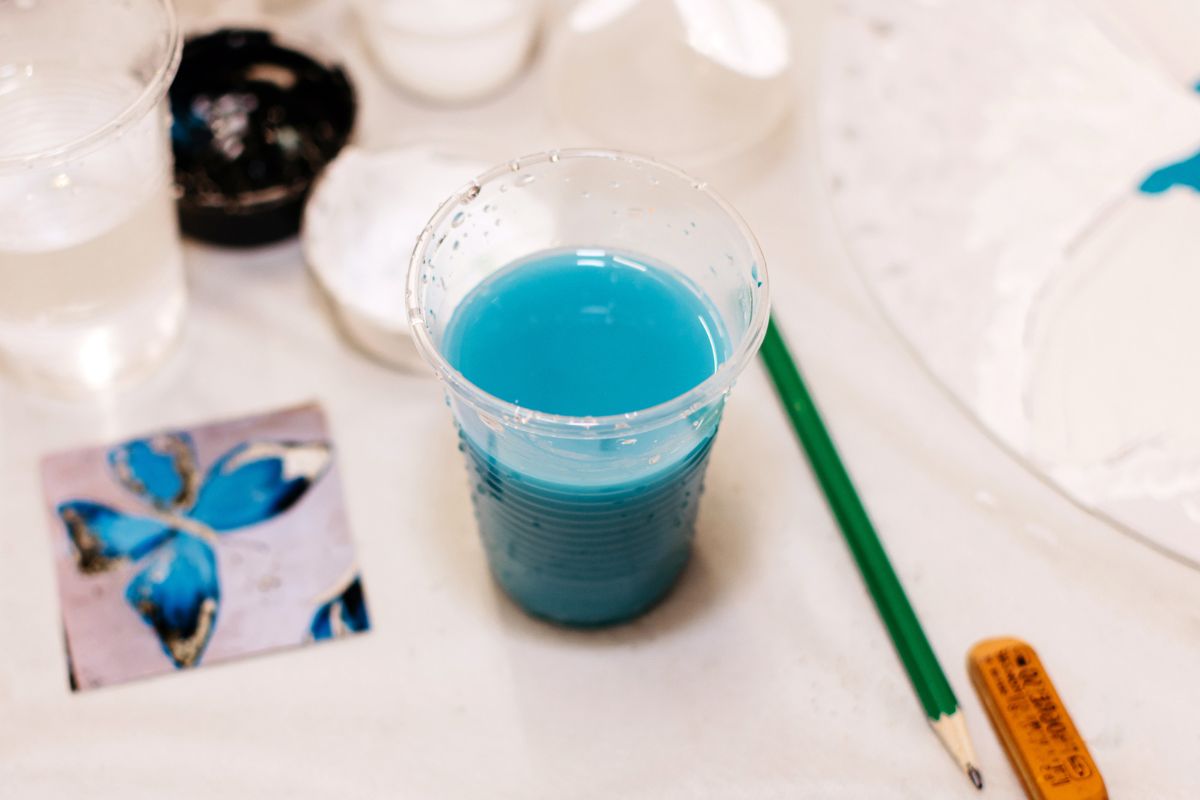If you work with oil paints, you are also working with paint thinner. So, how do you dispose of the paint thinner when you are finished with what is considered to be hazardous waste?
There is a right way to dispose of paint thinner and several wrong ways that many people use without realizing just how dangerous this could be.
It is important to make sure that you are always properly disposing of your paint thinner. This is a hazardous chemical solvent that can be quite dangerous. Not only can it harm you, but it can also be detrimental to the environment.
Today we are going to look at how to properly dispose of turpentine and other hazardous types of paint thinner, and what you shouldn’t do when disposing of paint thinner.
If you’re wondering how to dispose of paint thinner after cleaning brushes, let’s get started!
The Right Way to Dispose of Paint Thinner
First, we are going to talk about how to dispose of turpentine and other types of paint thinner correctly. Because it is classified as a household hazardous waste product, you can’t just toss it into the trash.
Paint thinner is hazardous when ingested, and it can easily pollute waterways if it is not properly disposed of. When disposing of paint thinner, be sure to always take it to a household hazardous waste collection center.
If you do not know where to take old paint thinner, you must contact someone in your municipality to find out the local and state regulations. They will inform you of where it can be taken for disposal.
Most areas have several of these centers. In some cases, you may even find temporary household hazardous waste collection centers being set up at various times during the year.
It may be a bit of a pain to have to go through this process, but you must do so every time you need to dispose of paint thinner. I suggest storing old paint thinner in a container and letting it build up so you only have to take it to a center once or twice per year.
Keep in mind that paint thinners are flammable. They have a flashpoint of below 140 degrees Fahrenheit.
Paint thinner should never be stored near a source of heat. Always store it in a container that has a lid that can be closed tightly. Even the vapors from paint thinner can ignite!
Remember, this is the only safe and secure way to dispose of paint thinner properly. If you simply throw it away or flush it down the drain, you could end up polluting the environment.
Why Is Paint Thinner Dangerous?
While paint thinner is commonly used by artists and contractors, this doesn’t mean that it isn’t dangerous. In addition to being highly flammable, it is also a hazardous substance that can cause a myriad of health problems.
For instance, if you were to inhale the vapors it could cause a headache, or it could cause you to go into convulsions and even pass out!
If you get paint thinner on your skin, you could end up with dermatitis. Getting paint thinner in your eyes can cause burning, irritation, and even blindness!
It is important to keep paint thinner out of the reach of small children and animals. If it should happen to be swallowed, it can cause several health issues, including nausea, diarrhea, stomach upset, seizures, and even death depending on the amount ingested.
Because of the toxic nature, many people nowadays tend to look for natural alternatives to paint thinner.
This is why it is so important to make sure that you know how to get rid of paint thinner correctly. The last thing you would want to happen is for it to get into groundwater, lakes, and streams, or the sewage system and then end up hurting someone.
The Wrong Ways to Dispose of Paint Thinner
Now that you know how to properly dispose of paint thinner, let’s take a look at how not to dispose of it. First, never flush paint thinner down the toilet, because it will end up getting into your local water system.
Also, never pour paint thinner down the drain, for the same reason.
Paint thinner should never be poured onto the ground. It can seep into the ground and cause environmental damage.
You might be tempted to think that if it is diluted with water that this will not be a problem. Think again!
Never throw paint thinning out with your regular garbage or leave it with the recycling. Also, never take it to a landfill.
Conclusion
It is important to always read the directions on any type of household chemical, including paint thinner, and know how to properly dispose of these hazardous chemicals.
Seeing as how it is as simple as taking unused or leftover paint thinner to a proper disposal facility, there is no reason to dispose of it in any other manner. This may seem like a lot of work, but it is definitely worth it in the long run, for yourself, for others, and for the environment.
See more:
*image by antonereminphoto.gmail.com/depositphotos
Sari Green is a semi-professional artist and professional writer. She has been hosting paint & sip parties for the past couple of years, and truly enjoys helping other people to create their very own masterpieces. She loves to create, and you never know what she’s going to come up with next!

